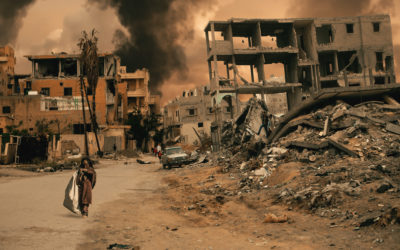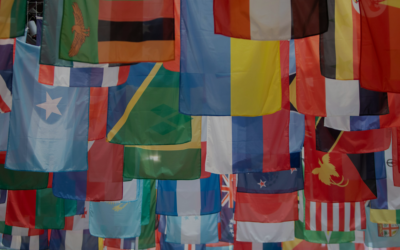Writers on this blog and elsewhere have decried the retreat from multilateral solutions by many of the world’s current leaders, led by US president Donald Trump. They are not looking to the (United Nations) UN and other multilateral institutions to find solutions to global problems.
The counter-argument is that global crises of health and the environment are precisely the kinds of problems for which multilateralism, and the “UNiversalist” world body, is ideally suited. The coronavirus pandemic and climate change must therefore be brought to the UN for solution.
Those saying the UN should act claim that its role and functions are unique. But there is so much that the UN “should” do but doesn’t or can’t. And is its role really unique?
These crises will be a test of the main functions of the UN development system, which are broadly ideational and operational. Ideas, based on research and reliable data, are the basis for advocacy and can inform global policy-making and norm-setting. Operations are intended to convert ideas into action. In practice, however, the UN’s slow operational response to crises risks proving the unilateralists right, even if their reasoning is wrong. The UN’s sound information and advice may or may not be welcome.
But is the UN really capable of finding timely solutions to global problems? What if there are alternative, and better, solutions to global cooperation which do not involve the UN? We take the current crises as examples.
COVID-19
When the coronavirus first became a threat to human health, the World Health Organization (WHO) was not aware of it because the outbreak was initially concealed from view. In this case the universal organisation was only as transparent as its least transparent member.
When the coronavirus could no longer be hidden, WHO began a series of its carefully worded declarations. Its first situation report was on 21 January, an estimated 5-6 weeks after the first case of COVID-19. On 30 January, WHO declared a “health emergency of international concern” but only on 12 March did the outbreak become a “controllable pandemic”, by which time there were over 125,000 cases of COVID-19 in 117 countries.
“Operationally, WHO (and other UN) actions can initially do little”
UN politics and bureaucratic procedures have served us poorly. Chinese reticence, a reluctance to respond to signals from non-member Taiwan and a linguistic dance around the definitions of crisis meant that WHO’s warnings were not early enough to avert the rapid spread of the disease.
And the response? In this post-truth era, the WHO is a key reference point: it acts as a valuable clearing house of credible information, and a source of expert advice. But operationally, WHO (and other UN) actions can initially do little.
The race is on to find a vaccine. But the starting gun was given by a Shanghai clinic on 12 January when it published the genome sequence of the virus on open platforms (only to be closed down by the Chinese government the following day). Thanks to this “subversive” early disclosure through global networks there are now more than 80 laboratories around the world trying to develop a vaccine.
Support is coming from organisations like the Coalition for Epidemic Preparedness Innovation (CEPI), an international public-private partnership which has no organic link to WHO. In the quest for a new vaccine, CEPI has signed nine new partnership agreements since January. They haven’t waited for any green signal from WHO, and the vaccines that are trialled will seek certification from national health authorities in the first instance. There are also new resources available. Funding for vaccines ($8 billion thus far) in the wake of COVID-19 has been mobilized, but by the European Union (EU) and the Global Alliance (GAVI).
It is a similar picture with anti-viral medicines. Building on well-established scientific networks around the world, lots of research and trialling is proceeding, while WHO cautions in the background about the dangers of side-effects. True, WHO has warned us off drinking bleach, as suggested by one world leader, but plenty of others have given reliable warnings.
After a series of Ebola and other virus outbreaks since the 1970s, WHO has had enormous exposure to pandemic risk and has developed preparedness plans to which member-states have signed up. But plans would not seem to have led to more timely and effective action. WHO was again slow to act when Ebola struck three West African states in 2014. In the most recent outbreaks in the Democratic Republic of Congo, a key tool has been a new vaccine developed and approved by the private sector (Merck) in the US, and certified ex post by WHO.
Once an effective vaccine against COVID-19 has been found, WHO and UNICEF will be active in immunisation in the poorer countries. Because of their worthy track record, the UN vaccinates more than half the world’s children and adults. This is an operational success. But is this capacity exclusive to the UN?
Climate Change
Wordy plans have also characterised global policy making in the search for solutions to the other major global crisis: climate change. The Intergovernmental Panel on Climate Change (IPCC) has done the research and broadcast vital information on the warming planet, advocating urgent action. But the Conference of the Parties to the UNFCCC has met 25 times to refine its plan, and still the latest version will not guarantee a solution to global warming. The fact that Paris 2015 (COP 21) was already considered a triumph demonstrates that the UN judges performance by words rather than results, highlighting the arduousness of getting 193 parties to agree to anything.
“We the Peoples” are also becoming increasingly engaged (e.g. through Fridays for Future, Extinction Rebellion) in organising strikes and demonstrations but they are unlikely to move the biggest carbon emitters. Few scientists believe that UN word-processing will cool the earth because the commitments are not binding. As Nobelist William Nordhaus said recently, “when an athletics team loses 25 times in a row, it is time for a new coach.”
It is clear that the coaches will be coming from elsewhere. One proposal is for a Climate Club of governments in which membership requires results to avoid penalties, including the imposition of trade tariffs. Other established solutions involve an extension of carbon pricing and trading – already successfully practised within the EU. The ‘carbon dividends’ version in the US has bipartisan political support and has already been endorsed by 19 of the Fortune 100 companies, five (of seven) oil majors, solar companies, NGOs and leading US economists.
Action will also come from the private sector through financial leverage and technological innovation. Private investors are already factoring in the risks of a warming climate. Climate Action 100+ comprises 300 private investors accounting for half of the world’s invested capital and it has begun to list the climate-saving conditions which they expect their companies to follow, on pain of divestment.
New technologies will play their role in renewable electrification, from small nuclear power plants to wind turbines and solar power. Innovations in the use of hydrogen as a fuel are advancing. Carbon capture and storage technologies attached to power plants will be accelerated through new subsidies.
“Could the UN actually be an impediment to meeting crises?”
You didn’t see the UN mentioned in the last three paragraphs. It is there in the background as its agencies continue to turn out alarming reports and to exhort progress. But as a conservative club of governments, agreements among its disparate membership founder on the shoals of politics and procedures, and never carry the threat of sanctions.
One final disconcerting thought: could the UN actually be an impediment to meeting crises? Does it slow the reaction times of governments down to its own cautious pace? Also, for the likes of Trump and official US policy, the UN can become a scapegoat for failure, not because it has failed, but because it has not provided timely solutions.
By Stephen Browne
Founder and Co-Director, The Future UN Development System Project
Visiting Lecturer, Graduate Institute
Author of UN Reform: 75 Years of Challenge and Change (2019) and co-editor of the Routledge Handbook on the UN in Development (2020)
This article is part of the global’s series of think pieces on “Governance, in Crisis” published by the Graduate Institute’s Global Governance Centre.









0 Comments